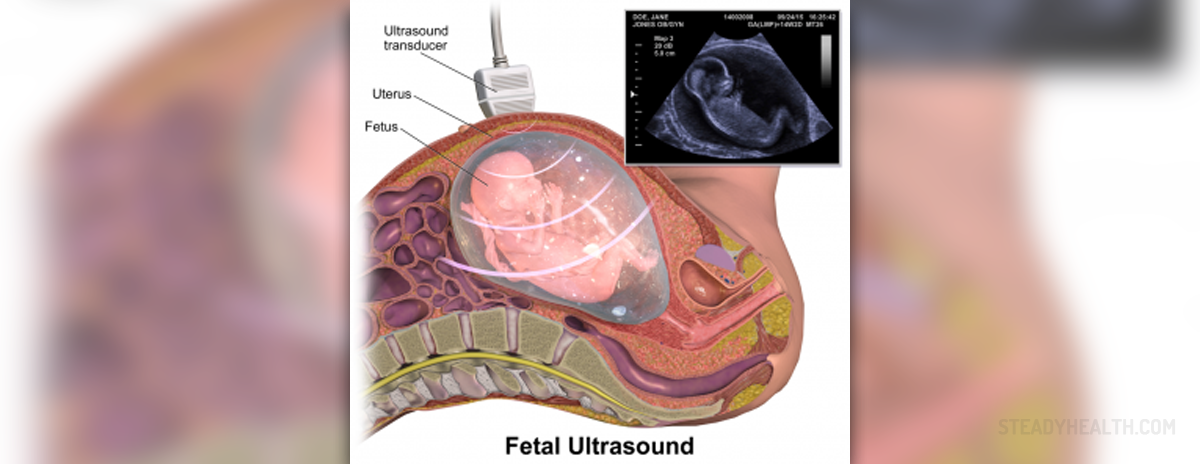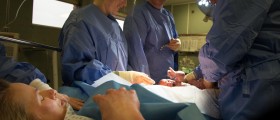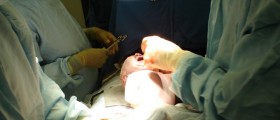
The first step is to assess the cause of fetal distress. This can be immediately obvious in some cases (in which case it would be even unnecessary to rely on the factors mentioned above to make the diagnosis), but difficult to pin point in other cases. Causes of fetal distress during birth include abnormal fetal presentations, shoulder dystocia, placental abruption, the baby's umbilical cord wrapped around its neck, and cord prolapse, where the cord comes out before the baby does, thereby compromising its oxygen supply. Irregular heart rates do not always mean the baby is in danger. In some cases, heart rates do go up and down with contractions, especially where labor has been induced or augmented, with drugs like Pitocin (see, Who needs Pitocin?).
Likewise, meconium-stained liquor can indicate fetal distress, but it does not always mean the baby is in distress. Several indicators or an obvious cause should be present to move towards a diagnosis, and concrete medical intervention. Once fetal distress has been diagnosed, and especially when there is a clear cause, the question is what now? In many cases, obstetricians will decide that an emergency cesarean section is the best course of action. Situations like placental abruption or a dubious heart beat often require immediate intervention. But, if your baby is already in the birth canal and about to be born, immediate delivery with the aid of forceps of vacuum may also be used.














Your thoughts on this
Loading...